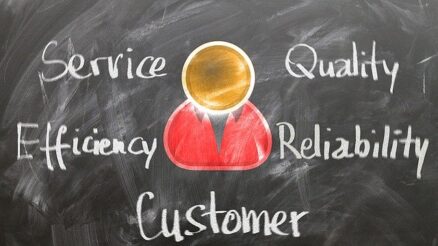In order to ensure success in change management, it’s important to have a clear communication strategy in place.
But the question is that what is the best way to communicate with employees during a transitional period?
This can be a challenge, as different people may respond differently to change. However, there are some general guidelines that can help you create an effective communication plan.
In this blog post, we will explore some of the key elements of an effective communication strategy for change management.
We’ll also look at some examples of how you can use communications tools and above all what is the best communication strategy in change management
Let’s get started
03 Broad Communication Strategies in Change Management
We’ve put together 03 broad communication strategies which are used in organizational change process.
1. Communication Strategy Continuum
Phillip Clampitt presented change communication strategies on the continuum.
The continuum has 05 communication strategies. At one end there is “Spray and Pray” which is about delivering too much information and on the other end there is “Withhold and Uphold” which is about delivering little information. However, there is “Underscore and Explore” at the middle of continuum which is about allowing employees to express their concerns and management presents their solutions. Perhaps this strategy work best during change.
Organizations can mix these strategies because all these five strategies might have some relevance in some situations of organizational change. And organizations need to see what fits into their needs.
Here is detail of these 5 strategies
| Spray and pray | Employees are bombarded with information about change initiative ; Managers think that more information is better and they pray that employees will understand about change because lot of information is given to them. Advantage: Employees are given all information about organizational change. Disadvantage: Employees are unable to know what information is important for them and what is not |
| Tell and sell | Change leaders give limited information only about crucial aspects of change process. And also communicate with employees to get their buy-in Advantage: This communication is focussed and done quickly Disadvantage: It is one way communication and employees are unable to share their thoughts and feedback. |
| Underscore and explore | Change leaders involve employees and have a dialogue with employees and stakeholders on key issues of change management. Advantage: Its a two-way communication and employees are encouraged to give their ideas and find solutions of issues. Disadvantage: Its challenging and this kind of communication takes lot of time. |
| Identify and reply | Change leaders only communicate to address rumors and confusions about change. Advantage: Its helps to overcome resistance of change. Disadvantage: It is not a proactive communication and it does not motivate employees to take ownership of change. |
| Withhold and uphold | Change leaders only share limited information about change. And they don’t disclose detail and explain change idea and plan. Advantage: Leaders have control over communication. Disadvantage: Employees remain confused about change. This also cause resistance to change. |
2. Communication Strategy and Type of Change
Some of change experts explained that communication strategy and communication tools must reflect the type of organizational change. They outline four type of strategies:
- Developmental change seek involvement of employees at large scale so there is a need of face-to-face communication, interpersonal style of communication so that employees and stakeholders are involved in each step of change.
- Task-focused change seek to involve employees with what change leaders or management directions. Its is mostly top-down style of communication so email, memos, letters, limited one-on-one meetings are used to communicate message.
- Transformational changes seek emotional communication to completely transform from one position to another. Its again mostly top-down style of communication but two way communication is also used in a limited way.
- Turnarounds seek compliance from employees so top-down style of communication is used in this sort of change.
3. The Communication Escalator
The Communication Escalator strategy is advocated by Bill Quirke who is the famous theorist of change communication. He says that communication strategy depends on degree of organizational change. The most significant change and more focussed communication needs to be done and more employees need to be involved in change communication. According to this strategy, degree of involvement is divided into four aspects: awareness, understanding, support, and involvement, to commitment.
The communication escalator signifies the communications methods and tools that are relevant to each degree of involvement. For example:
Awareness: When change requires involvement at only awareness level then only email, memos, newsletter can be used to communicate message.
Understanding: It change need to involve employees to have better understanding of new process then roadshow, videos and employees conferences are good methods of communication.
Support: To get support of employees special consultation meetings, training programs are used.
Involvement: For this level, team meetings, conferences, and interactive conferences are appropriate.
Commitment: To have full commitment from employees or stakeholders, all communication methods mentioned above are used.
09 Key Elements of Effective Change Communication Strategy
Following are some key elements of an effective change communication strategy:
1. Convince top management that communication is important
In today’s fast-paced and ever-changing business landscape, effective communication is more important than ever before. Top management needs to be convinced of the importance of communication and its impact on success of organizational change.
Without clear and concise communication, change cannot be effectively implemented. Good communication helps to ensure that everyone is on the same page, aligned with the company’s goals and objectives. It also helps to build trust and rapport within an organization.
2. Build alliances across the organization to support initiatives
Change communication is about more than just selling an idea to employees. It’s also about building alliances across the organization to ensure that the initiative has the support it needs to be successful. This involves engaging key stakeholders and decision-makers, understanding their concerns and needs, and developing a communication strategy that addresses those concerns and needs.
By taking the time to build these alliances, leaders can create a strong foundation of support that will increase the chances of success for their initiatives.
3. Use a mix of approaches and use all available channels
In order to reach the widest possible audience, it is important to use all available communication channels when disseminating information. This includes both traditional channels such as meetings, memos, letters, flyers as well as newer digital channels such as social media and email.
Of course, not every message needs to be communicated through every channel. Some messages may only be relevant to a certain audience, or may only require a single channel for maximum impact. In these cases, it is still important to carefully consider which communication channels will be most effective. By carefully planning your change communication strategy, you can ensure that your message has the widest possible reach.
4. Respect cultural diversity in change communication
When developing a change communication strategy, it is important to take into account the diversity of the population that will be affected by the change. Although some change communications are targeted at a general audience, others may be specifically designed for a particular cultural group.
Respect for cultural diversity means not only acknowledging the existence of different cultures, but also understanding and respecting the differences between them.
It is important to avoid making assumptions about what people from different cultures will respond to or find important. Instead, change communicators should take the time to learn about the customs and values of the target audience. By doing so, they can develop change communication strategies that are more likely to be effective and respectful of cultural diversity.
5. Make sure that messages are consistent, over time and between audiences
When crafting a communication strategy, it is important to ensure that messages are consistent over time and between different audiences. This can be challenging, especially as circumstances change and new audience segments emerge.
However, there are a few steps that organizations can take to ensure message consistency.
First, create a set of core messaging guidelines that capture the essence of your organization’s mission and values. These messages should be regularly reviewed and updated as needed.
Second, develop templates or style guides for different types of communications, such as newsletters, press releases, and website content.
Finally, train all employees and volunteers on the importance of message consistency and how to apply the organization’s messaging guidelines in their work.
6. Ensure clarity of message and keep things simple
In today’s fast-paced world, it’s more important than ever to ensure that your communication is clear and concise. When you’re conveying a message, change your communication strategy to ensure that your audience understands what you’re saying.
Use language that is easy to understand, and avoid jargon or technical terms. If you can say it in fewer words, do so. And always remember that clarity is key. Taking the time to ensure that your message is clear will save you time in the long run, and it will help build trust with your audience.
7. Train managers in communication skills
Communication is a vital skill for any manager. After all, the ability to effectively communicate with employees is essential for establishing a strong working relationship. Furthermore, communication skills are essential for conveying information about change clearly and concisely.
Today many businesses have started to invest in training their managers in communication skills. By doing so, they are ensuring that their managers are better equipped to handle the challenges of the modern workplace.
8. Develop two-way communication, dialogue, and feedback
Two-way communication is essential to engage employees in change process. By encouraging dialogue and feedback, you can create an open environment where people feel comfortable sharing their ideas and concerns.
This, in turn, can help to identify potential problems early on and prevent them from becoming bigger issues down the road. Of course, two-way communication requires more than just holding occasional team meetings; it also means being proactive about seeking out feedback and being open to change.
9. Review communication initiatives to check what has worked, what hasn’t, and why
It is important to review communication initiatives on a regular basis to ensure that the message is getting across as intended. This can be done by looking at things like what has worked well, what hasn’t worked, and why. This process can help to identify any areas where the communication strategy needs to be changed. It can also help to improve the effectiveness of future campaigns.
Final Words
By taking the steps outlined above, organizations can develop a best communication strategy in change management that is clear, concise, and effective. By keeping things simple and training managers in communication skills, organizations can create an environment where two-way communication is encouraged and dialogue is open. Furthermore, by regularly reviewing communication initiatives, managers can make sure that they are reaching their target audience with their message.



